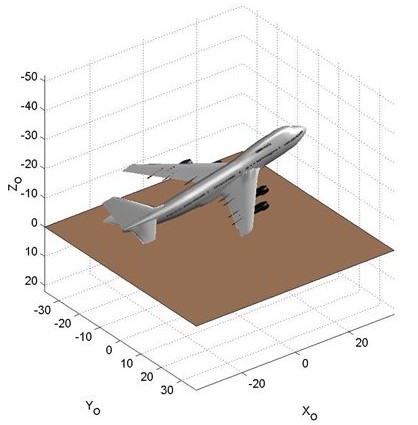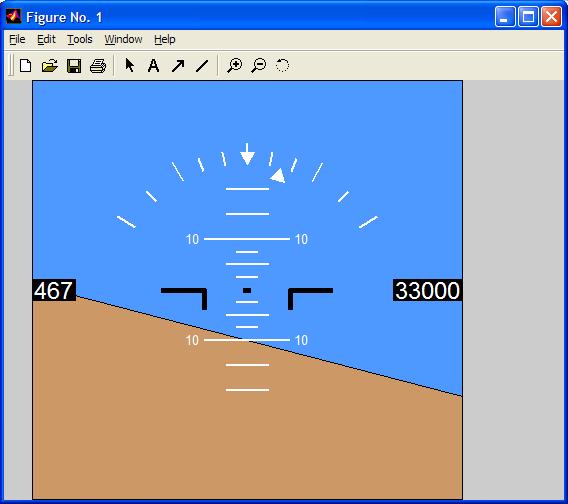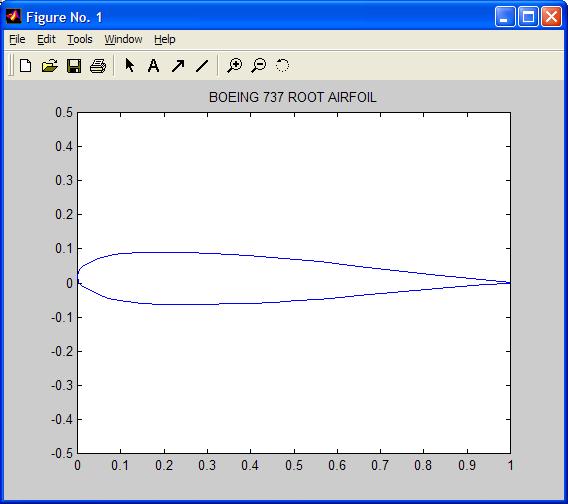
|
Would you like to draw an aircraft in 3 dimensions with Matlab ? I give you this oportunity with the "DessineMoiUnB747.m" function. This allows you to draw a B747 in three dimensions in accordance with the inputs you gave:
course angle, pitch angle, bank angle, altitude.
- Language: Matlab function
- Inputs:
- Course angle (radians) - Cap
- Pitch angle (radians) - Assiette
- Bank angle (radians) - Gîte
- Altitude (meters) - Altitude
To call the function, you have to do (for example):
Gite = -5 *pi/180;
Assiette = 12 *pi/180;
Cap = 0 *pi/180;
altitude = 15;
DessineMoiUnB747(Cap,Assiette,Gite,altitude) - Outputs: As you can see on the chart at the left, the output is a figure (with its handle properties) in which the B747 is drawn at the flight position that you specified.
- What does this function do? This function draws a B747 in a 3D Matlab figure.
- How does this function do it? It uses the Matlab function "patch('Vertices',vertices,'Faces',faces)" to draw the B747. Rotation matrices allow to put the B747 on the flight attitude you want.
- Why does this function do it?
This function can be used to illustrate some reports; to show airplane in a specific flight attitude.
This function can be used to make flight dynamics animations. For example, it could be usefull to show to the students how the airplane moves in dutch roll, or during a phugoïd... You only have to give the angles and altitude evolution (from solving dynamic of flight equations) to the function DessineMoiUnB747.m, and you could watch the airplane moves.
% Example to make the airplane moves
for(i=[0:1:15 15:-1:0]),
clf,
DessineMoiUnB747(0,i*pi/180,0,37);
pause(0.0001)
end
download it for free
|


